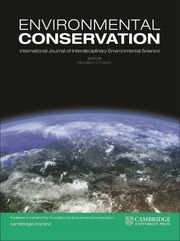No CrossRef data available.
Article contents
Ecological representation and conservation gaps of South Korea’s protected areas
Published online by Cambridge University Press: 03 September 2025
Summary
The Convention on Biological Diversity, ratified by 196 countries including South Korea, aims to protect at least 30% of the world’s land, inland waters and marine areas by 2030 as part of the Kunming–Montreal Global Biodiversity Framework. Beyond increasing protected areas (PAs), promoting biodiversity by protecting different ecosystem types is crucial. We investigated whether South Korea’s PAs evenly cover various ecosystem types. We examined overlaps between the Korean Database of Protected Areas (KDPA) and the Korean adapted Ecosystem Typology (KET) map, which modified the International Union for Conservation of Nature (IUCN) Global Ecosystem Typology (GET) three-level ecosystem functional group map based on South Korea’s land cover. Compared to the biogeographical ecoregion map, the KET map provides finer ecological detail on representation within PAs and reveals the under-representation of human-influenced ecosystems; eight human-influenced ecosystem functional groups, including rice paddies and urban and industrial ecosystems that may contribute to biodiversity or cultural value, had <10% protection. The T2.2 deciduous temperate forest type dominates, covering 54.79% of PA area across 18 of 27 PA categories. This concentrated protection has led to up to 24 overlapping PA designations in certain locations. Expanding protection for under-represented ecosystems and diversifying governance could help South Korea align with global biodiversity goals.
Keywords
Information
- Type
- Research Paper
- Information
- Copyright
- © The Author(s), 2025. Published by Cambridge University Press on behalf of Foundation for Environmental Conservation


